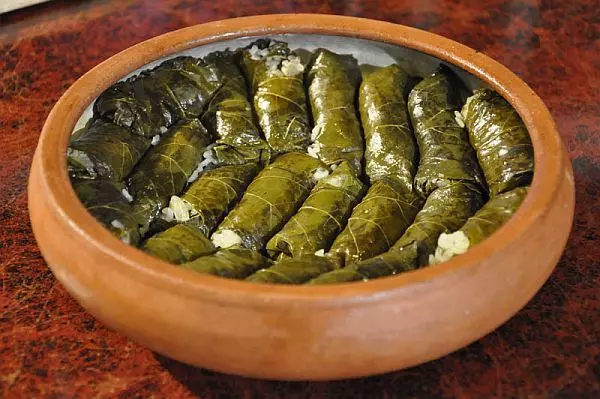Who would have thought that the most delicious dish can be prepared from the leaves of the legendary biblical vine. Tolma – stuffed cabbage from grape leaves – is not only cooking, but also a whole art.
According to The Oxford Companion to Food, tolma is a dish of Armenian origin. Later, she migrated to the cuisines of other eastern peoples. It is important that a similar version is supported by the culinary historian William Pokhlebkin, who argued that tolma came to the Turkish table at a time when the territory of modern Armenia was divided between Turkey and Iran.

Literally all the peoples of the region argue about the origin of the word “tolma”, but the Armenians claim that it goes back to the Armenian word “tolma”, which means “vine”. After all, the tolma stuffing is wrapped in grape leaves, and the lightest and most delicate ones, so that the dish does not turn out tough. To prepare the filling, minced meat of three types is traditionally needed: pork, beef and a little lamb.
And basil, oregano and tarragon are added to minced meat. The saucepan for preparing this delicious dish should be laid out with grape leaves, then tightly lay the tolma on them and press on top with an inverted saucer. Tolma is served with matsun and garlic sauce. The most delicious is considered tolma, which is wrapped in a grape leaf, harvested in May. Grape leaves ripen during this period, and are now soft.
Imagine, there are about 80 ways to prepare tolma. And this is not surprising, because the first mention of the recipe for this dish in Armenian sources dates back to the 5th century. So, in the old days, meat for minced meat was carefully processed with a stone and fresh herbs, dzavar or blgur (wheat varieties) were added. Seasoned with spices and freshly squeezed juice of unripe grapes. In Armenia, lean versions of this delicacy are also prepared. The filling is made from lentils, peas, red beans, onion rings, tomatoes.
And now the most difficult thing is wrapping the dolma, you can’t do without skill. This is a whole art that takes so much time that tolma is traditionally considered not an everyday, but a festive dish.
Tolma is widely distributed in the cuisines of the peoples of Transcaucasia, the Balkan Peninsula, Western and Central Asia, as well as North Africa. The debate about where this dish comes from continues to this day. But we will not delve into these disputes, but simply invite you to Armenia to cook a real Armenian tolma with your own hands.